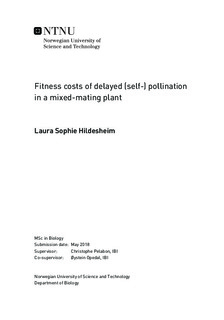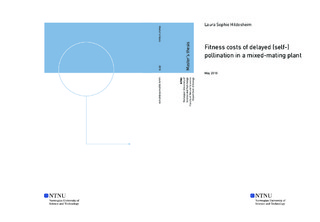| dc.description.abstract | Delayed selfing may provide reproductive assurance for plants facing unreliable pollination environments, but may negatively affect the reproductive performance due to inbreeding depression. Furthermore, floral senescence may impose an additional cost to delayed (self-) pollination, if late pollination yields lower reproductive performance. Therefore, delayed selfing, and floral traits mediating this strategy, are expected to covary with the mating system of a population.
Here, we first test whether herkogamy and dichogamy, together determining the rate and the timing of delayed autonomous selfing, covary across 14 populations of the mixed-mating vine Dalechampia scandens. We also test whether floral longevity responds plastically to delayed pollination. We then study the costs of delayed selfing on reproductive performance, explicitly separating inbreeding depression from senescence costs.
Herkogamy and dichogamy covaried to some extent across populations. Although dichogamy was generally less variable than herkogamy, we still observed genetic differences in blossom ontogeny and longevity between species, and blossom longevity responded plastically to delayed pollination. Reproductive performance in terms of seed quantity and quality decreased with an increased delay of (self-) pollination independently of inbreeding depression.
Overall, the delay of pollination affects reproductive fitness following delayed selfing negatively, beyond the often assumed effects of inbreeding depression. In unreliable pollination evironments, this may select for selfing to occur earlier in the blossom life span. However, if floral traits are selected to increase (delayed) selfing, the evolution of blossom ontogeny and therefore dichogamy may be constrained more strongly than morphological traits. | |

